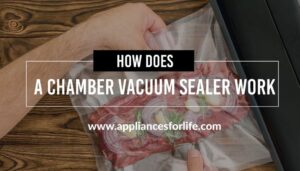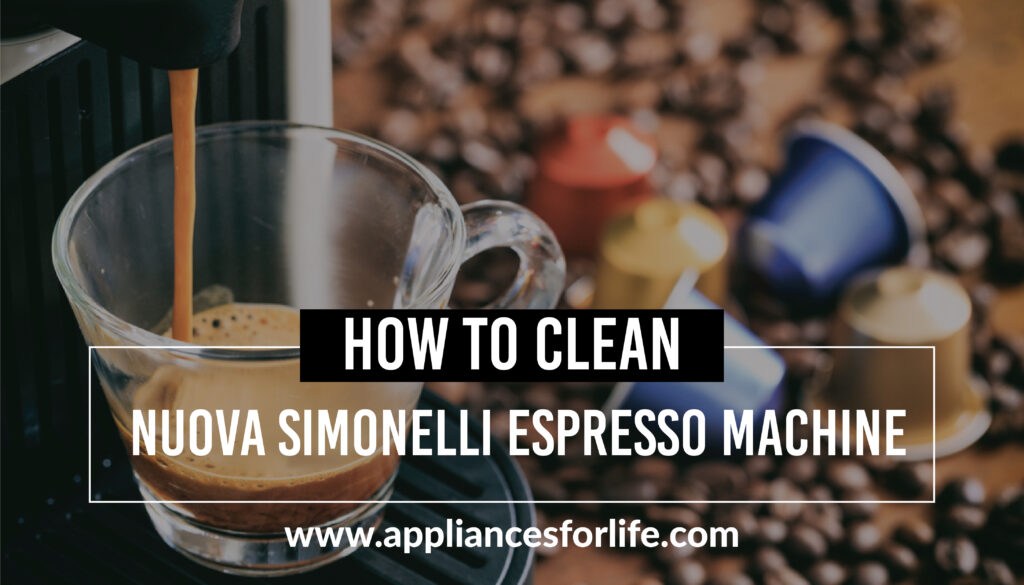- Espresso coffee is a more concentrated form of coffee. Although it is made from the same beans used for traditional coffees, it is more concentrated. It is thicker, and higher in caffeine. The expresso is a special coffee served in Italy, though its fame has now spread worldwide due to its unique flavor.
- A Nuova Simonelli espresso maker is quite expensive and this fact is not a surprise if one considers the quality it produces compared to traditional coffees. However, this coffee brand has made that quality affordable to everyone by inventing the beautiful Nuova Simonelli espresso maker. However, to derive ultimate satisfaction from your espresso maker, you need to learn how to use it and clean it after every use. Find out how to clean your espresso maker in this article.
Cleaning a Nuova Simonelli Espresso maker
Table of Contents
ToggleIt is not a rare occurrence for the tiny tubes inside an espresso maker to be caked with Calcium found in hard water. An espresso maker generally creates tasty beverages when its services are invoked and it is important to keep it in its best working condition if it is to continually make fresh and good brew. One of the ways to achieve the optimum functioning of an espresso maker, irrespective of its model, is by descaling it regularly. Descaling the espresso maker will ensure a good brew and a well-running machine. Moreso, cleaning out the espresso machine’s inner workings can remove hard water deposits or buildup from coffee oils and grounds.
How an Espresso Machine Works
It is important to understand how an Espresso machine works if you will be able to run necessary diagnostics on it when faults arise. Not only that, some understanding of the working of an espresso maker will also help with its cleaning because only then will it be clear to you, the parts to clean and pay specific attention to. Typically, an espresso machine has four areas, according to Clive Coffee. These are the water source, pump, boiler and steam wand, which may also be called the group head.
So, how does an espressoThe simplest way to understand how an espresso maker works is to first realize that, in most machines, water moves through the four parts/phases mentioned above before it reaches the cup at all. It goes from the water source to the Pump, then to the boiler, then the group head and lastly, the Steam Wand.
The Water Source
Every espresso machine needs water to work. Water enters the machine from two possible sources; the reservoir built in the machine or through an external source where it gets consistent water supply.
The kind of water container to be attached to an espresso maker is determined by the uses of the machine itself. A espresso machine used to make only a handful of coffee in a day may not need to be connected to an external water supply but if brewing is necessarily done more regularly, there may be a need to connect to an external source of water. The reason why the reservoir system may be preferred is because it already carries a high quality water filtration pitcher that automatically filters out any form of dirt from the water.
For larger home and light commercial machines meant to produce hundreds of drinks daily, it’s important to have a steady supply of water. These machines are usually plumbed in and will rely on built-in or whole-house softening and filtration systems. The benefit of these machines is the convenience of never having to refill a reservoir.
However, for larger homes or commercial centers where coffee is constantly brewed, it is important to have constant water supply to the machine.These machines are usually plumbed in and will rely on built-in or whole-house softening and filtration systems.
Lastly, there is also a hybrid model espresso machine that offers the ability of both direct-plum as well as an inbuilt reservoir.
The Pump
The pump is regarded as the heart of any espresso machine. The pump is really important because it provides water the strength to push through a tightly packed bed of finely ground coffee. A coffee machine needs at least 9 bars of pressure which translates into 130 PSI in order to brew ground coffee. Baristas would have to manually pull these levers to force the water to pass through the coffee (hence the term pull an espresso).
The Boiler
The job of the boiler is to bring the heat. Water must be pressurized and heated at the same time to turn ground coffee into a delicious espresso. Therefore, the job of a boiler is to heat and hold the pressurized water coming from the pump. In older espresso makers, boiling was done with wood fire but modern ones now use electric heating elements to bring water to a hot temperature.
It’s important to consider the size of the boiler. The bigger the boiler, the more drinks the machine will be able to produce. On the other hand, the bigger the boiler, the more energy.
Maintaining a Nuova Simonelli Espresso Machine
A Nuova Simonelli Espresso may look pretty complex and difficult to clean but they are actually pretty easy to clean. After every use, it is common to find residual coffee grounds and milk buildup on your espresso machine. While this may be managed over the second and/or third use, the taste of your brew may change significantly after a number of other uses. Apart from this defect, coffee and milk build up could eventually damage your machine. Hence, not cleaning the machine regularly enough may damage your coffee maker and affect your drink quality at the same time.Trust me, no one wants to experience this, we want you to have great, clean-tasting coffee every morning, and a machine that lasts a very long time. So we’re going to walk you through some quick and simple tasks to help you keep your machine clean and in tip-top shape.
Hard Water and an Espresso Machine
Another issue you are likely to encounter while you use your Espresso coffee maker is scale buildup due to poor water quality. Hard water substantially shortens the lifespan of the machine and exposes you to expensive repairs.
Issues arising from hard water scale buildup can be prevented by using only filtered and softened water and when hard water is already visibly staining the espresso maker, properly study on how to remove hard water stains from stainless steel in order to avoid any faults that hard water may cause to those parts of your espresso maker that is made of steel.
Remember we already mentioned in the previous section that water is an integral part of the functioning of any espresso maker. Whether water is supplied to the coffee maker through an external water source everytime it is in use or it is reserved in an in-built reservoir for heating and brewing, it is necessary to go through some filtration process.
Luckily enough, for in-built reservoirs, there is already a filtration system that ensures that clean water gets into the espresso maker but if you are connected to an external water supply, you have to get it filtered every time you need to use the espresso maker. Remember that total hardness can be between 35-85 ppm and it is not good at all for your espresso maker.For both plumbed-in and reservoir machines, we recommend this water softening and filtration system. You can either install it in-line with your machine or under the sink to fill a pitcher of water. You can even clean any part of those parts made of steel with baking soda.
Daily Maintenance
Cleaning the Group Head
A group head can be defined as the component of the espresso machine from which water is distributed into the coffee filter basket. Essentially it connects the unit to the group handle and in turn connects the water to the coffee grounds. There are two common types of group heads, they are the saturated group heads and the semi saturated group heads. The former is exposed directly to the boiler and it can easily reach the same temperature as the hot water because they are simply an extension of the boiler and even now and then, they get saturated with hot water. The semi-saturated group heads on the other hand are detached from the main boiler by a device that works as a heat exchanger. Unfortunately, this semi-saturated group head is not as stable as their counterpart in maintaining the desired temperature but they are cheaper to manufacture and easier to fix.
After you grind, tamp and extract your espresso, it is important to immediately flush or purge the group head. This can be done by simply taking the portafilter out as soon as it is safe to to be detached after pulling your shot and wiping it clean. After removing it safely, proceed to clean the group head for about 3 seconds to ensure all coffee grounds and oils are being flushed out of the screen. Espresso should be flushed out of the group head as often possible, to prevent buildup. Even if your screen appears to be clean on the outside, the inside could look very different, which can be detrimental.
Steam Wand Cleaning
Modern espresso or coffee machines have a steam wand that usually hangs off to one side. This useful arm essentially forces steam into the milk. This steam slowly warms the milk with a small amount of pressure. The cleaning of your steam wand is really important because milk buildup can damage your espresso maker and affect its taste too. Therefore, you want to make sure you purge your steam wand both before and after steaming your milk.
To purge your steam wand, fill your container with 500ml of cold water and 300ml of milk frother cleaner. After making your solution, completely submerge your steam wand in it and leave it there for at least 5 seconds. Repeat this process in new solutions, a few more times- At least 5 times before you eventually withdraw the steam wand and wipe it thoroughly.
While your steam wand is submerged, make sure it is not left in the solution for too long and in fact, change the solution every time you are to repeat the process. This caution is necessary because it is possible for water to force some milk residue back through the steam system and into your boiler. And if milk residue gets into your boiler, be sure to produce a sour espresso. Besides that, any steam produced by your machine may acquire an unpleasant taint which can only be cured by stripping down the machine and cleaning out the boiler.
Flushing your Nuova Simonelli Espresso Maker
After cleaning out the espresso machine with vinegar, citric acid or a commercial cleaner, it is important to flush the lines with plain water. This will remove any residue from the cleaner. Particles from the citric acid or powdered commercial cleaner can lodge within the piping system or group head and taint the taste of the brew.
Steps to Deep Cleaning a Nuova Simonelli Espresso Maker
- Make a cleaning solution by dissolving a small amount of Nuova Simonelli Espresso machine cleaner in water.
- Scrub the basket, portafilter and group gasket using a nylon brush and a specialized group brush. To see good results, damp this brush in the solution prepared above and softly scrub through affected areas.
- Using a screwdriver if necessary, remove the screen from the group and scrub both sides, as well as the interior of the group.
- For some Nuova Simonelli Espresso Maker, backwashing or backflushing may not be necessary however, consult your manual to be sure of what it demands from you. If recommended by the manual, backwash or backflush the unit by placing a blind basket in the portafilter and attaching it to the group. Put the cleaning solution in the water reservoir. Run as directed, usually for several times at about 5 seconds each.
- After complying with the above, remove the blind baskets and rinse it thoroughly with clean water.
- Sanitize the steam arm by flushing it with hot water and wiping it with a dry towel
- Remove and clean the drip tray
- And, finally wipe the exterior clean with a towel.
Portafilters and how to clean them
According to House and Beyond, the portafilter is the part of the espresso machine that embraces the ground coffee or espresso beans before, during and after the brewing process. Portafilters create the required pressure to brew a palatable cup of espresso. Portafilters exist in four types and they are the commercial, the adapters, the pods and the pressurized portafilters. The commercial portafilters The commercial portafilter can be used in both home espresso makers as well as commercial machines while the adapters are customizable, so to speak. They can be modified to allow more use cases than originally intended. Pods on the other hand are designed strictly for espresso makers and they are usually found in Nuova Simonelli Espresso Maker
To effectively clean the Portafilter, first and foremost, detach the portafilter from the group head and thereafter remove the portafilter basket. After detaching all that is to be detached, fill your plastic container with boiling water and put the basket in to soak. Insert the cleaning blank into the portafilter and pour 1 teaspoon (around 3 grams) of espresso machine cleaning powder into the cleaning blank. Then insert the portafilter into the group head, as you would when making an espresso shot.
FAQs
What is the best espresso machine brand?
This question is a tough one to answer. This is so because the term ‘best’ is relative. Essentially, what I may regard as very good or possibly call the best may not be held by another individual in such esteem. Hence, a better question will probably be, ‘what is the best espresso machine brand for me?’. Nuova Simonelli espresso machine ratings are high indeed when we speak of excellent espresso makers but in my opinion, no brand beats Bialetti just yet. Bialetti is an Italian brand that prides in the manufacturing of the best espresso makers in the world. They are the best because they are simply an extension of the heritage of espresso making, to the world. Italy is the ultimate home of espressos and Bialetti is the herald of its ‘gospel’ to the world. Learn how to use a Bialetti espresso maker and you may never want to use any other ever again.
How long should an espresso machine last?
That obviously depends on the quality of the machine—meaning the quality of the materials in it—and, if it’s a super-automatic, the quality of the electronics and technology. Machines with brass boilers, stainless steel or steel frame construction, are going to last longer than those made with cheaper materials. The heating element and the pump mechanism (for non-lever machines) are the two parts that can cause problems. Look for espresso machines with high quality, long-life components that are designed to be serviced and repaired instead of tossed in the garbage when they have a problem.
19 MINUTES
ESTIMATED TIME DESIGNING AND UPLOADING THIS ARTICLE
8 HOURS
ESTIMATED TIME RESEARCHING AND WRITING THIS ARTICLE
You Might Also Like

Best Stovetop Gooseneck Kettle With Thermometer
Top 5 Best Stovetop Gooseneck Kettle With Thermometer Tea and coffee lovers always love to keep a kettle around, electric or stovetop. If you’re looking for a good gooseneck kettle to buy, our review of the best stovetop gooseneck kettle with a thermometer will help

Best Blender For Green Smoothies
The one question asked all the time is what are the best kitchen appliances to buy? When it comes to choosing a blender which makes silky, smooth smoothies it can be a difficult choice. There are hundreds of models to choose from with prices ranging

Black Stainless Steel Frigidaire Dishwasher Review
Black stainless steel dishwashers are fast becoming very popular, thanks to their sleek and beautiful designs. If you’ve been looking to explore your options on the market for a new dishwasher, you will find our black stainless steel Frigidaire dishwasher review particularly helpful. Kitchen appliances

Choosing the best blenders for your kitchen is crucial if one must blend and process foods perfectly to taste. Wolf Gourmet blenders are manufactured in two major categories, there are the High performers and the Pro-Performers. The quality of both categories is stunning, especially when

How Refrigerator Wheels Guarantee Mobility and Balance for Frigidaire Refrigerators
Frigidaire fridges are known for their aesthetic design and quality. Not only do they offer features powered by modern and fascinating technologies, they are also built to stand the test of time. Some Frigidaire Fridges, like many other refrigerator are built with wheels for balance

Kitchen Appliance Package Deals And More
Getting Started Kitchen appliances have improved our lives and changed our lifestyle such that we can now enjoy convenience while getting most things done in our kitchen. Kitchen packages come in different types and are better than when one shops for individual kitchen appliances, which cost more money. You get the best prices when you

What Can You Do with a Food Processor?
The kitchen is one place in the house where quality time has to be spent because that’s where cooking activities go down. This has made the kitchen one of the most important and busiest places in the house. Cooking can be fun, especially for those

How to Make a Washing Machine Quieter?
Having a noisy washing machine can be very annoying. If you have one in your laundry room, you need to know how to make a washing machine quieter to avoid loud noises that you can find very disturbing. In this article, we’ll explore how to

How Does a Chamber Vacuum Sealer Work?
With demands for vacuum sealers rising like never before, a lot of people have often wondered if there was more to these machines than what they were made to seem like. In terms of functionality and operations, you could forgive those who think there was

How to Use a Stovetop Griddle?
As a homeowner, making the most of your kitchen appliances and tools should be one of your top priorities. If you’ve been struggling with using a griddle or using a griddle on a gas grill, our detailed guide on how to use a stovetop griddle

